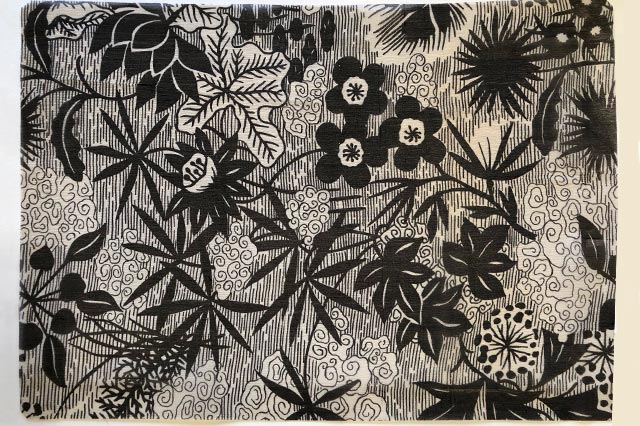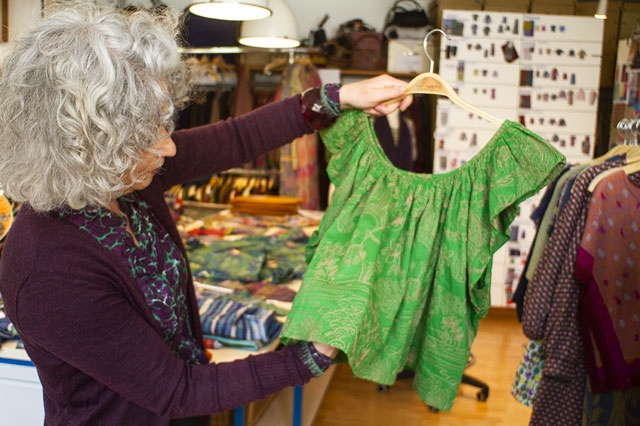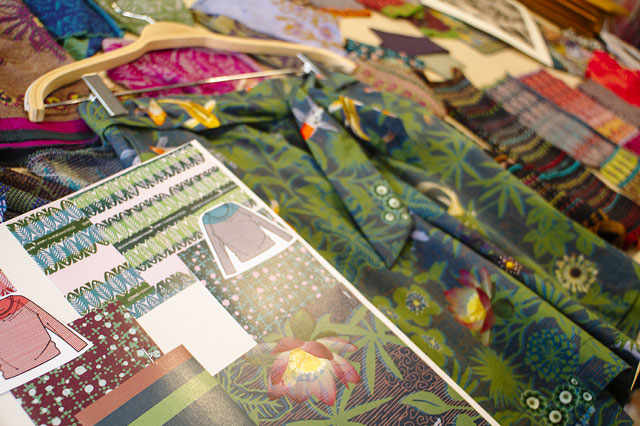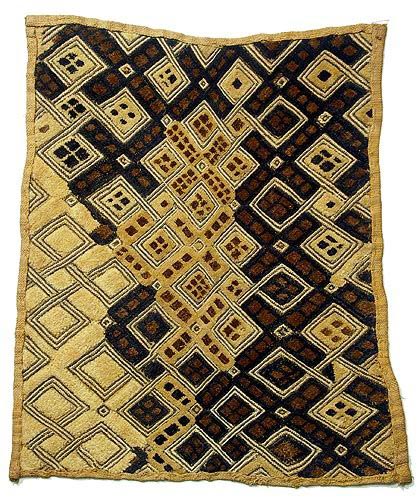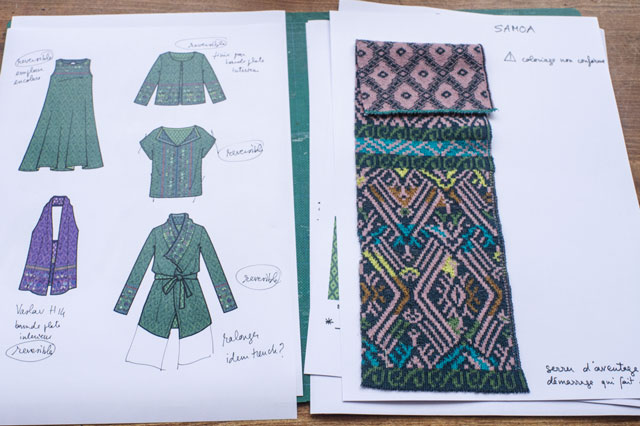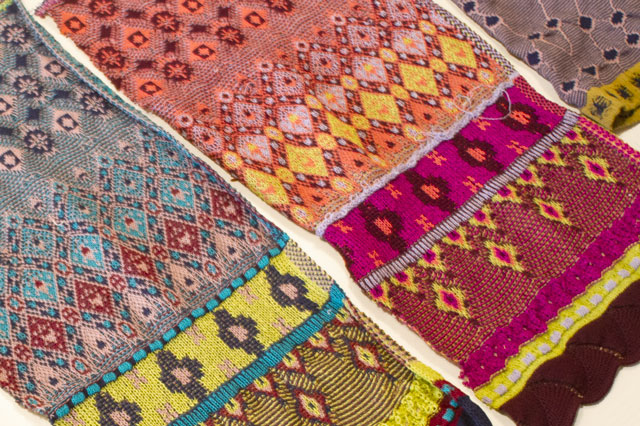From Okinawa to HawaiiPrinted Hawaiian shirts have a Japanese origin, due to waves of emigration from Japan and Okinawa to Hawaii in the late nineteenth century. These first Hawaiian shirts, later renamed "Aloha", were first cut in kimono fabrics.
It is a nineteenth fabric with Japanese motifs, bought from a collector, which formed the basis for the emblematic print of the collection, to which were added photos of flowers and koi carp, very colorful, to bring that touch of a quite disturbing depth as well as movement, omnipresent on Hawaiian shirts. | |
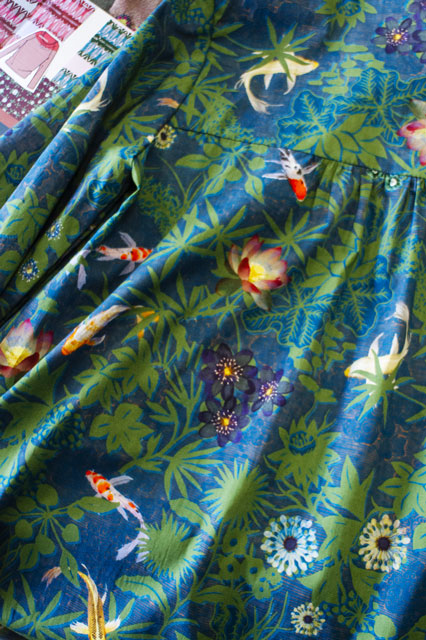 This print colors determined the general range of the whole collection. We find the coral of the carp, the greens, deep or waterlogged, and all the gradations of blue that can be find in the indigo, from the greenest to the most purple |  Reuse of the nineteenth motif, extremely enlarged, for the Jungle theme. |
The Aloha theme is another interpretation of the Hawaiian shirt. It is a continuous machine-embroidery, composed of the typical elements of Hawaiian shirts, such as the vahiné, tropical fish, hibiscus and a Tahitian surfer wearing a Catherine André jacquard sweater, surfing on stylized waves inspired by Hokusai. It's our « House » touch.
| |
Journey fantasiesThis collection is a mix of Pacific island cultures, from Hawaii to New Zealand through Easter Island, Samoa... I clicked while reading Joshua Slocum's diary, written during his solitary tour of the world but also by my contact with the culture of Okinawa, so special and so precious to me. Joshua Slocum, a sailboat captain just as the steam was taken the navigation market, rebuilt a small ship, the Spray and left in 1895, at age 51, the coast of the United States for a journey of 46,000 miles during which he has lived incredible adventures made of pursuits of pirates in the Mediterranean Sea, a meeting in the Samoan Islands with the widow of writer R. L. Stevenson, who gave him the nautical notebooks of her husband... | |
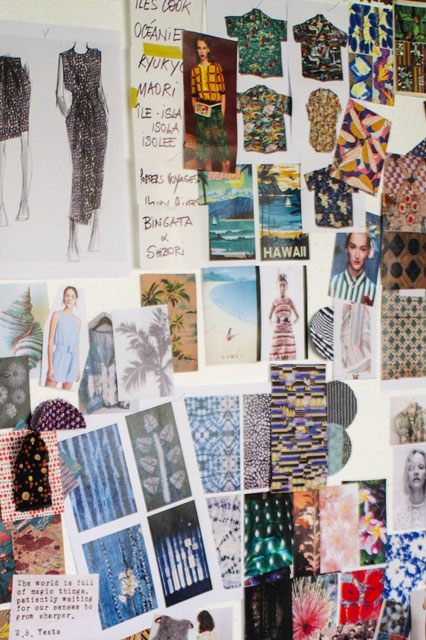 | 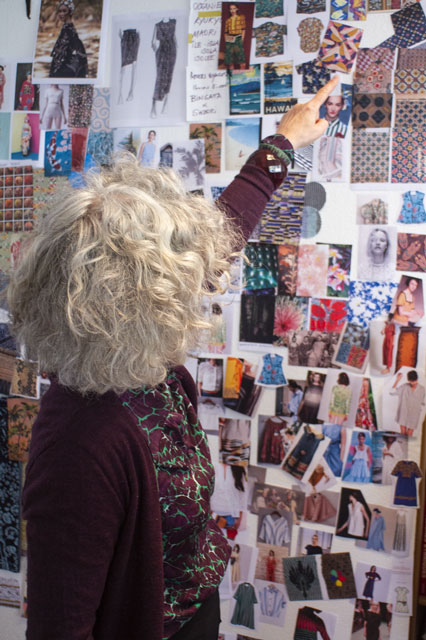 "The world is full of magic things, patiently waiting for our senses to grow sharper." |
Another influence comes from Herman Melville novel, Taïpi, in which he recounts his experiences on the Nuku Hiva island, in the Marquesas archipelago. We always find in my collections, a trace of travelers and writers, as well men as women: there was Lou Andréa Salomé, women travelers such as the orientalist Alexandra David-Neel, Lafcadio Hearn who, before being adopted by Japan, traveled to the West Indies. When I went to the island of Iriomote, under a gray sky, the water of the lagoon was turquoise but a kind of milky turquoise absolutely indefinable, once must be familiar with the subtlety of the islanders dialect to describe this color. That reminded me of Lafcadio Hearn, who, on the way to the West Indies, amazed every morning by the ocean extreme intensity of blue and to which a passenger replied, "But you will see, there, it will be even more blue... ". The green is not to be outdone, the green of the vegetation is also very present. This is my fetish color, it is found in all my collections, even when I try to part with it. But this season, the collection story gives its justification.
| |
Keep the guiding threadSpeaking of Samoan Islands, two of our jacquards, one reversible and one tone-on-tone, are inspired by tribal motifs painted on Tapa. These vegetable fabrics, obtained from beaten bark, are from an ancient technique that is practiced in Oceania, as well as in Japan. Before initiating this collection I had the chance to meet Mrs. Iwatate, a great traveler and collector of old traditional textiles, I could see what was a Tapa in her museum. | |
|
The themes of the collection, Samoa and Tapa, are illustrated on clean and graphic pieces. |
Each collection is a kind of circumnavigation! It's a real adventure that I never know exactly where it will lead us, even if the limits of the scenario are set very early. The conception of the mesh, the reaction of the threads depending on the techniques, the dyes and the colorings, are a complex task which requires a lot of patience and perseverance but also requires a good dose of flexibility and inventiveness. It is necessary to stop during the gestation for regular checks and sometimes rebuild the balance of this building called « collection ». During the process I can’t stop doubting but what a joy when at the closure, for the first fittings, everything is intertwined and well orchestrated! For me, mesh is a bit of witchcraft. | |
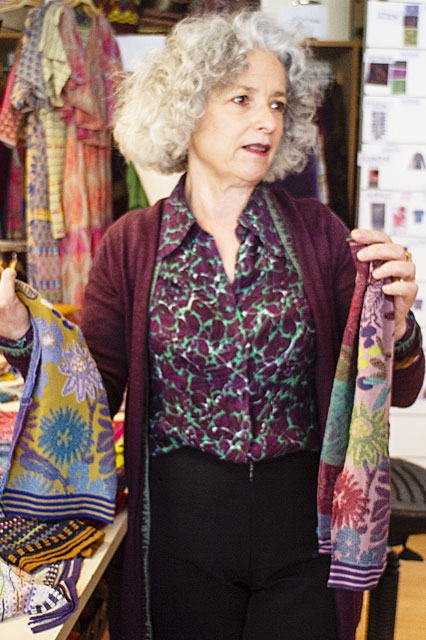 The Bloom theme is another interpretation of the nineteenth century fabric, with outdated shades and harmonies, it is a reminder of the spirit, the colors, of ancient kimonos. | 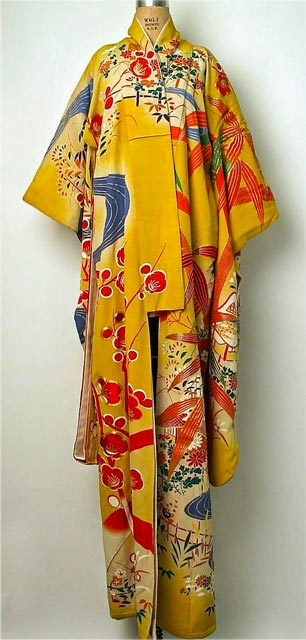 Ancient kimono. |
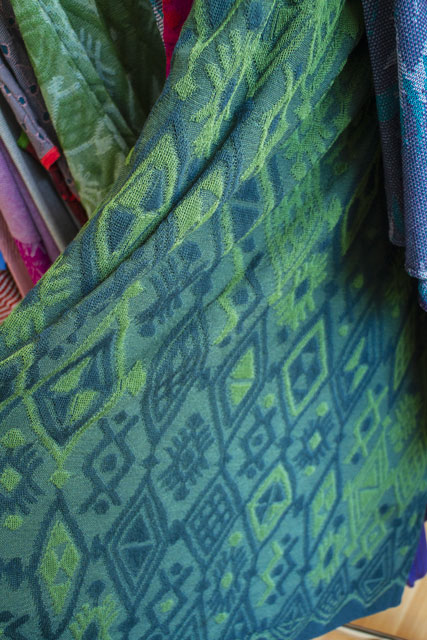 The Tapa theme is inspired from geometric motifs from the Samoan Islands. | 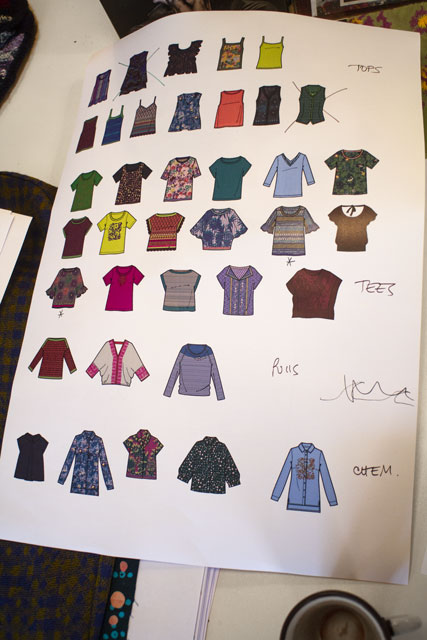 Overviews of the models while the collection is being created. |
The influence of textile traditionsThroughout the collection, reserve dyeing techniques have been a rich source of inspiration for my meshes. One of them is the Japanese shibori technic, which consists on folding and knotting the fabric to prevent the penetration of color, most often indigo. We find echoes of these ancestral techniques in the themes Mette, Batik, Luciole and Topic. | |
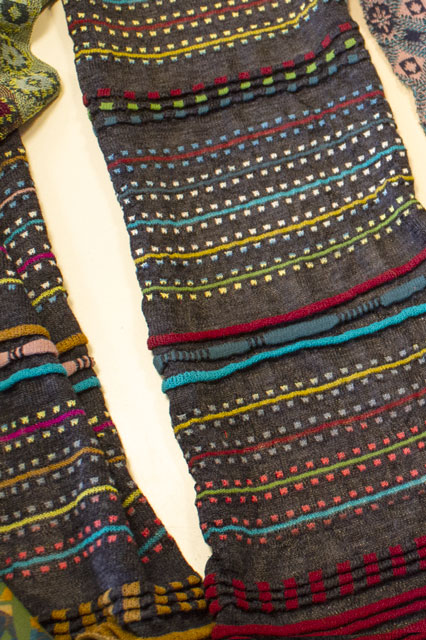 The Topic theme suggests by far these dyeing techniques through its dots. | 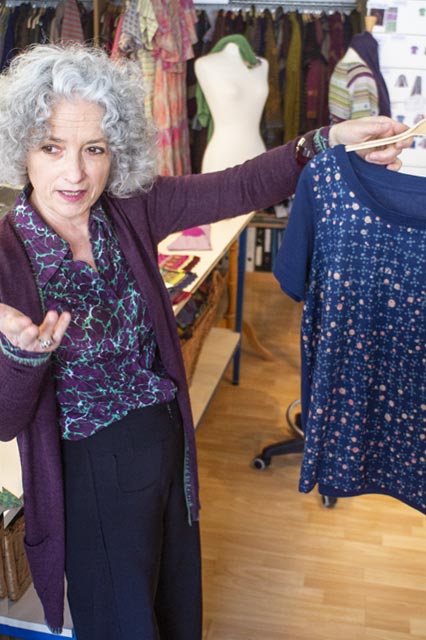 The irregularities and the connected circles represent for me the links between all these islands, whose cultural treasure is unfathomable and mysterious. |
Hula is a dance practiced by women of Hawaii, in order to communicate with the gods. The motif of this theme evokes for me the mysteries of spirituality. The mesh at the bottom of the wrists remind the waves movement suggested in the Hula dance. Photos report: Marco Bentz | |


